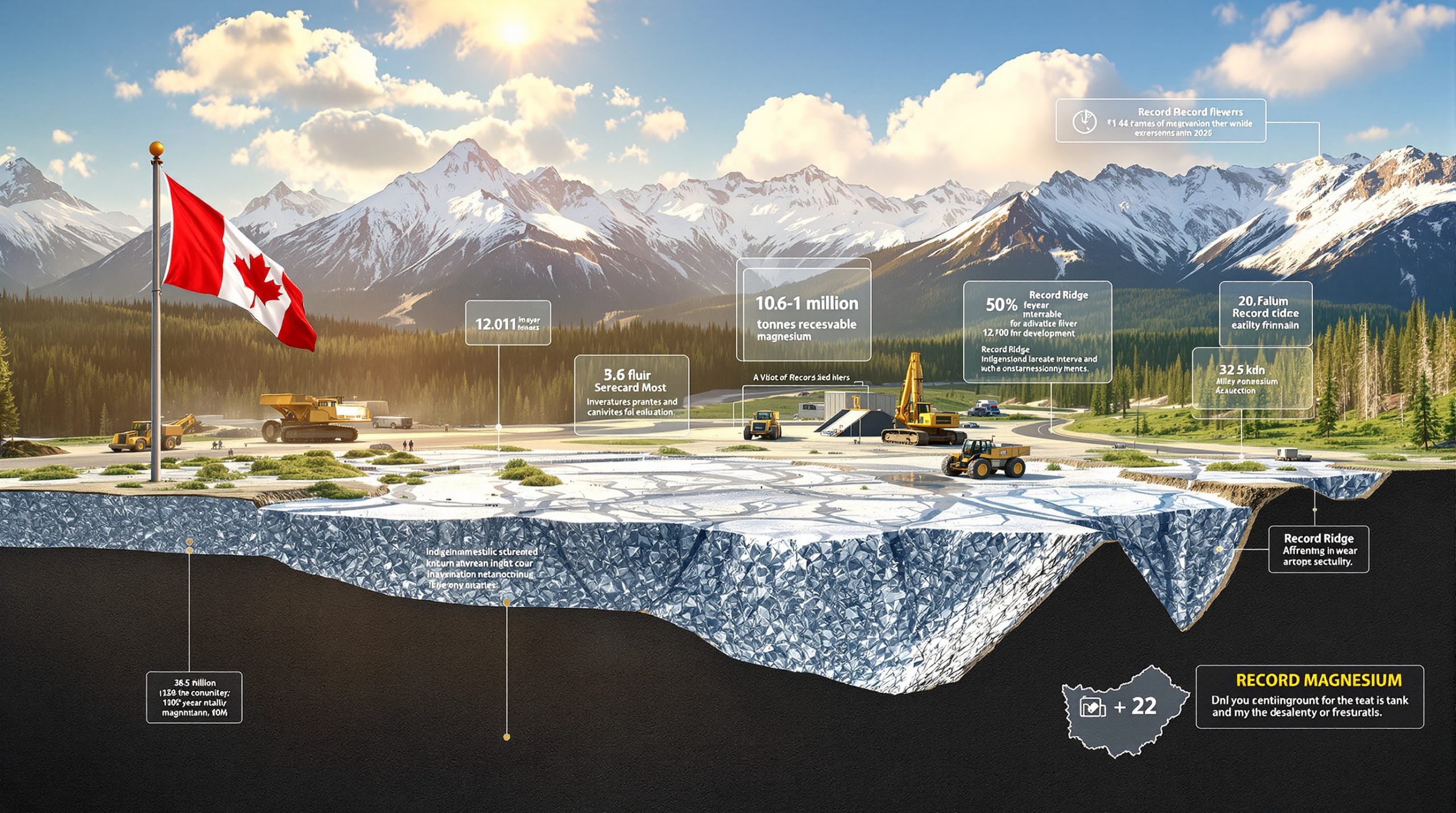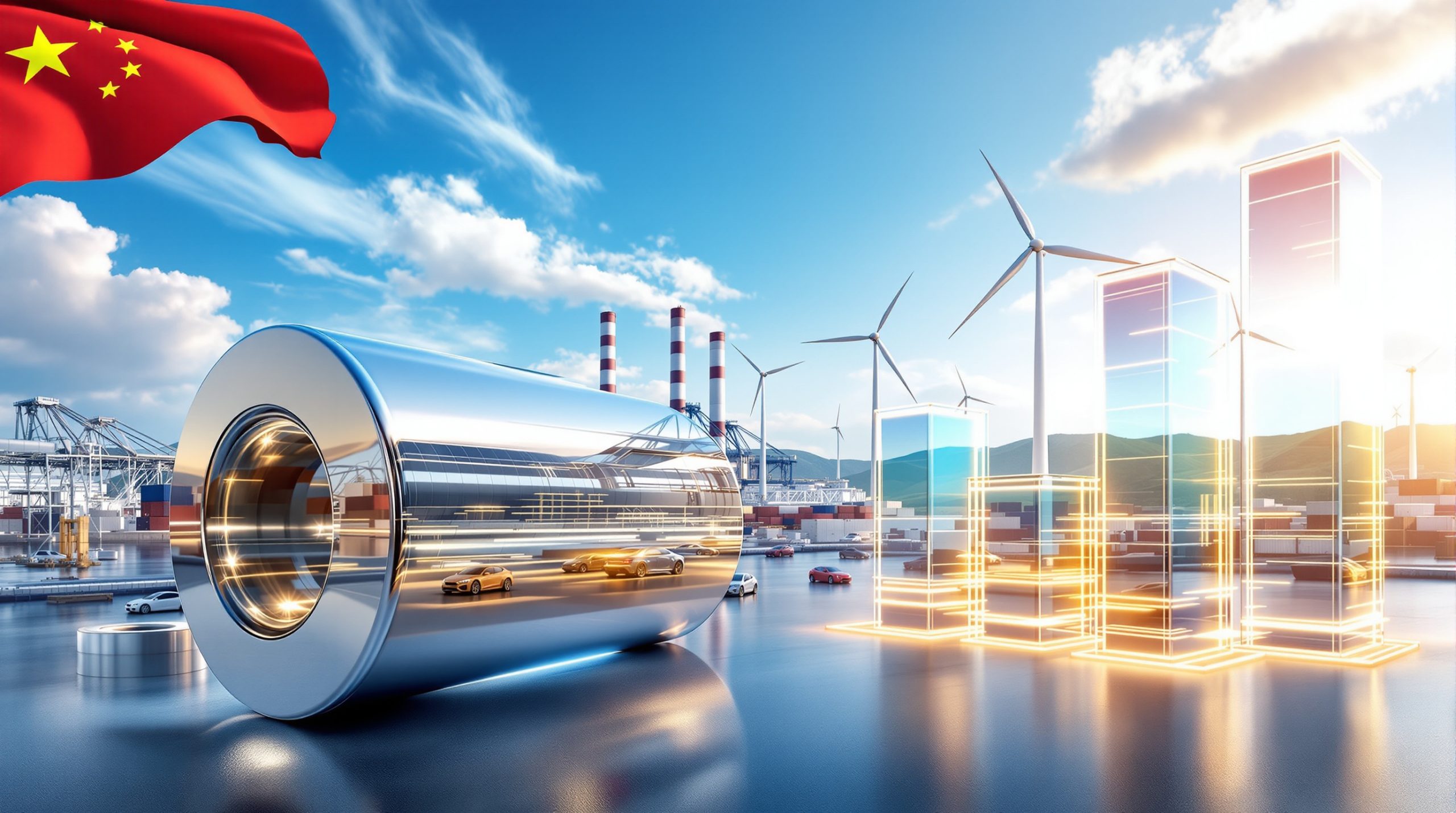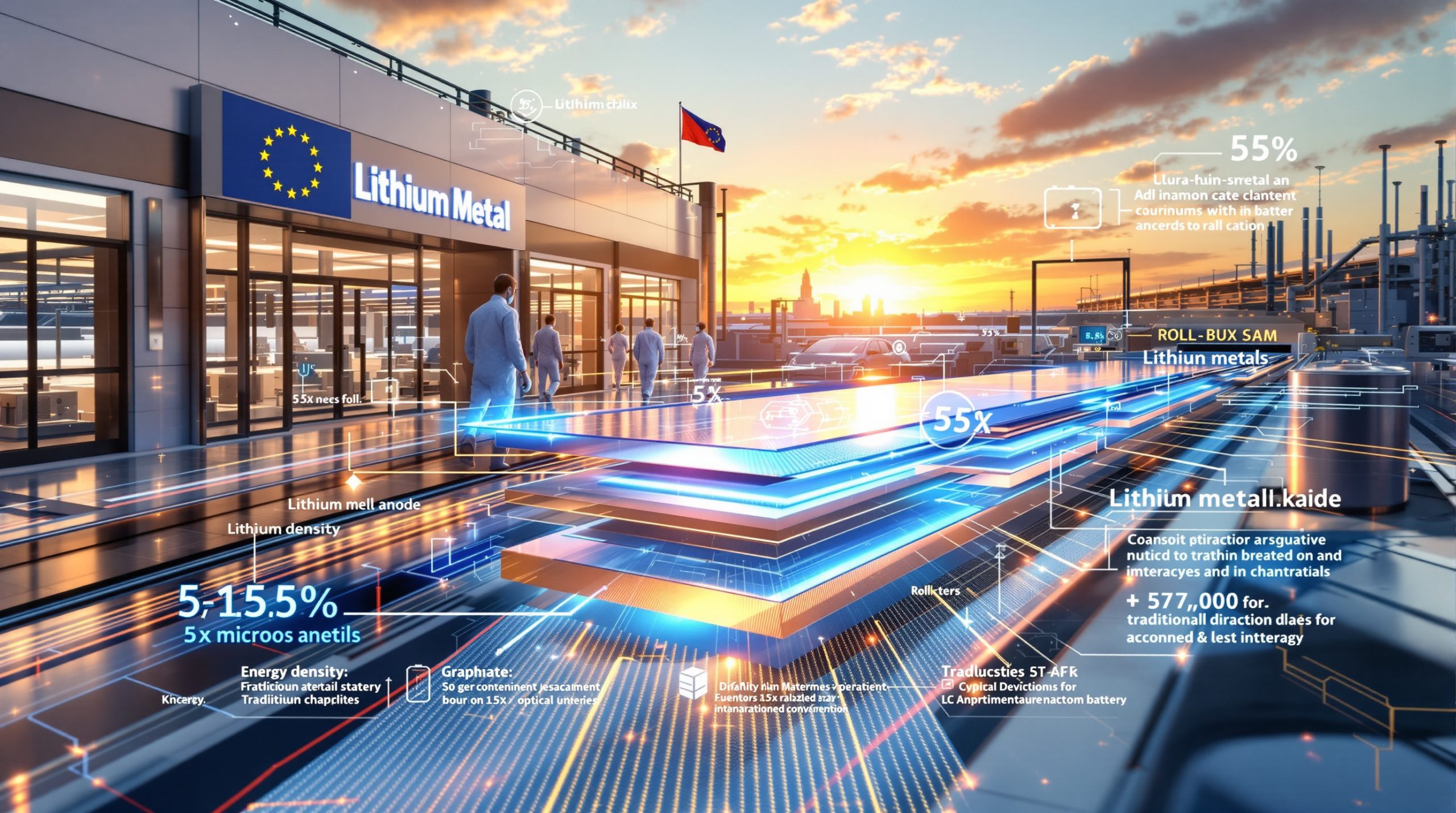What Are Rare Earth Minerals and Why Are They Important?
The Critical Role of Rare Earth Elements in Modern Technology
Rare earth elements (REEs) comprise a group of 17 chemically similar metallic elements on the periodic table, including the 15 lanthanides plus scandium and yttrium. Despite their name, most REEs are relatively abundant in the Earth's crust—but rarely in concentrations economically viable for extraction. Their unique magnetic, luminescent, and electrochemical properties make them indispensable components in modern technology.
These elements are crucial building blocks for technologies that power our daily lives. Neodymium creates powerful permanent magnets essential for wind turbines and electric vehicle motors. Europium and terbium provide the red and green colors in smartphone displays. Lanthanum enhances the performance of catalytic converters, while cerium is vital for petroleum refining.
Perhaps most critically, REEs are fundamental to national security infrastructure. Military applications include precision-guided munitions, radar systems, communications equipment, and night vision technology. The F-35 fighter jet alone contains approximately 417 kg of rare earth materials.
Global Distribution and Supply Chain Dynamics
The rare earth supply chain presents a concerning picture of global vulnerability. China dominates with approximately 60% of global rare earth reserves and an overwhelming 90% of refining capacity. The country produced 270,000 tonnes of rare earths in 2024, maintaining its stranglehold on global supply chains.
The United States Geological Survey (USGS) classifies all 17 REEs among its list of 50 critical minerals—resources deemed essential for economic and national security yet vulnerable to supply disruption. This classification underscores the strategic importance of these elements in global geopolitics.
Professor Liang Yan, an economics expert at Willamette University, emphasizes the enormity of China's advantage: "The scale is not comparable… It's also not just about the mineral deposit reserves, it's also about processing power." This processing capability represents the true bottleneck in the supply chain. Separating individual rare earth elements requires sophisticated hydrometallurgical techniques involving hundreds of extraction stages—expertise China has cultivated over decades.
This concentration of resources creates significant vulnerabilities for Western economies. When China briefly restricted exports in 2010 over a territorial dispute with Japan, prices for some elements surged by 750%. This incident served as a wake-up call about the fragility of REE supply chains, but diversification efforts have progressed slowly in the years since.
What Rare Earth Mineral Resources Does Ukraine Possess?
Ukraine's Mineral Wealth Assessment
Ukraine sits atop significant deposits of critical minerals, including promising reserves of rare earth minerals in Ukraine. Geological surveys indicate particular potential in the Azov Shield region, where alkaline complex formations contain valuable niobium and tantalum resources alongside REEs. Airborne geophysical surveys combined with ground sampling suggest the country possesses approximately 2.5 million tonnes of potential rare earth oxide reserves.
The Kruta Balka ilmenite-zircon deposit in southern Ukraine contains notable monazite concentrations rich in light rare earth elements. Additionally, complex ores in the Mariupol iron ore basin show concentrations of 0.5-1.2% rare earth oxides—modest by global standards but potentially economically viable with proper processing infrastructure.
Ukraine's potential in the rare earth market is most promising for certain heavy rare earth elements like dysprosium. Preliminary assessments suggest that with full development, Ukraine could eventually meet 10-15% of global dysprosium demand—a significant figure for this particularly critical element used in high-performance magnets.
Compared to China's expansive Bayan Obo mine, which alone produces 45% of global rare earth elements, Ukraine's deposits are modest. However, even modest production could significantly impact Western supply chains by reducing dependency on Chinese suppliers.
Impact of Russian Occupation on Mineral Access
The most significant challenge to Ukraine's rare earth potential is geopolitical rather than geological. According to South China Morning Post analysts, "Most of Ukraine's sought-after mineral stores are in parts of the country occupied by Russia after more than three years of war." This territorial reality complicates any serious development plans.
The occupied regions of Donbas and Crimea contain some of Ukraine's most promising rare earth deposits. This territorial occupation effectively places significant portions of Ukraine's critical mineral wealth under Russian control, creating both immediate access problems and long-term uncertainty about resource governance.
Resource extraction in active conflict zones faces extraordinary challenges. Mining operations require stable security environments, reliable transportation infrastructure, and regulatory certainty—all of which are compromised in contested territories. Even in Ukrainian-controlled areas near conflict zones, insurance costs and security requirements can increase operational expenses by 35-40%.
The geopolitical implications extend beyond bilateral Ukraine-Russia relations. If Ukraine were able to develop its rare earth resources, it would create an important alternative supplier for Western nations seeking to reduce dependence on China. Russia's occupation thus impacts not only Ukraine's economic potential but also broader efforts to diversify global rare earth supply chains.
Can Ukraine Challenge China's Rare Earth Dominance?
Current Processing Capabilities and Infrastructure
Ukraine's potential to challenge China's rare earth dominance faces a fundamental obstacle: a complete lack of industrial-scale separation facilities for heavy rare earth elements. While the country possesses raw materials, rare earth processing requires sophisticated technology that Ukraine has not historically developed.
Developing a complete supply chain would require an estimated $3-5 billion investment in specialized infrastructure. This includes high-temperature chlorination systems and continuous ion exchange chromatography units essential for separating individual rare earth elements from mixed concentrates. These technologies are not readily available on commercial markets and often involve proprietary processes.
Industry analysts project a minimum timeline of 5-7 years to achieve commercial-scale production of separated rare earth oxides, assuming optimal conditions and sustained investment. This timeline could easily extend given Ukraine's current wartime economic constraints and the technical complexity involved.
The case of Australia's Lynas Corporation illustrates the challenges ahead. Despite investing over $1 billion and operating in a stable political environment, Lynas took 15 years to reach just 25% of global capacity outside China. Vietnam's Dong Pao project offers another cautionary tale—stalled for a decade despite significant initial investment due to processing technology challenges.
Comparative Analysis: Ukraine vs. China
China's export restrictions on rare earths stem from decades of strategic investment in both mining and processing technologies. As Professor Liang Yan noted, "The scale is not comparable… Ukraine doesn't have tens of billions of mineral deposits." Beyond raw material access, China possesses an even more crucial advantage in processing capability.
The economics of rare earth processing favors established players with significant scale. China's integrated supply chain allows for cost-efficient production despite increasingly stringent environmental regulations. New entrants face higher capital costs without the benefit of learning curve advantages that Chinese producers have accumulated over decades.
Ukraine also faces significant workforce challenges. Rare earth processing requires specialized chemical engineering expertise that is in short supply globally and virtually nonexistent in Ukraine's current industrial base. Developing this human capital would require extensive training programs and likely international technical assistance.
Expert assessment suggests Ukraine could potentially become a niche supplier of certain heavy rare earth elements like dysprosium, but comprehensive competition with China remains unrealistic in the foreseeable future. More achievable would be integration into a Western-aligned supply chain focused on specific high-value elements for strategic applications.
What Does the US-Ukraine Minerals Agreement Entail?
Key Terms of the 2025 Agreement
The 2025 US-Ukraine minerals agreement centers around an innovative royalty-sharing structure that allocates 50% of revenue from Ukrainian resource projects to a jointly managed development fund. This arrangement covers various payment types, including traditional royalties, license fees, and production bonuses from mining operations.
The agreement establishes a joint oversight committee with quarterly audit requirements to ensure transparent governance of fund resources. Payment mechanisms include escrow accounts in European banking institutions with International Monetary Fund monitoring to prevent misappropriation of funds.
Implementation follows a phased approach, with preliminary exploration grants scheduled to begin in the third quarter of 2026. The agreement includes specific performance metrics and development milestones that must be met to unlock subsequent funding tranches.
This arrangement bears some similarity to Mongolia's approach with the Oyu Tolgoi copper mine, though with stronger international oversight provisions. In contrast to Afghanistan's failed mineral agreements during NATO occupation, the US-Ukraine deal includes specific provisions for technological assistance and workforce development.
Strategic Objectives Behind the Deal
The Trump administration explicitly cited "economic security as the prime motivator for the deal," reflecting growing recognition that mineral supply chains represent a national security concern beyond traditional military considerations. By securing preferential access to Ukrainian resources, the US aims to reduce vulnerability to supply disruptions from China.
For Ukraine, the agreement offers a potential pathway to economic recovery through resource development. Mining sector investment could generate employment in regions severely impacted by the conflict and create sustainable revenue streams less volatile than foreign aid packages.
The minerals agreement also represents an evolution in bilateral relations beyond direct military assistance. By focusing on economic development and strategic resources, the partnership aims to create more durable ties less subject to shifting political winds in either country.
Analysts note this agreement effectively positions mineral development as a partial replacement for traditional military aid in bilateral relations. This approach potentially creates more sustainable support by tying American commercial interests directly to Ukraine's economic success, though questions remain about whether resource development can proceed rapidly enough to address Ukraine's immediate financial needs.
What Challenges Must Ukraine Overcome to Become a Viable Supplier?
War-Related Obstacles to Mineral Development
The ongoing conflict with Russia creates formidable obstacles to mineral development. Approximately 60% of eastern Ukraine's mining infrastructure has been damaged or destroyed, requiring extensive reconstruction before commercial operations could resume even in government-controlled territories.
Security concerns dominate investment decisions in conflict-affected regions. Risk analysts warn that "investment risk factors remain extreme with active frontline movements," creating prohibitive risk premiums for potential investors. Private security adds 35-40% to operational expenses in conflict zones—costs that make many otherwise viable deposits economically unfeasible.
Infrastructure damage extends beyond mining facilities to transportation networks critical for moving bulk materials. Rail lines, bridges, and port facilities have suffered extensive damage, complicating logistics planning for any large-scale mining operation. Limited Black Sea port access due to Russian naval activities further complicates export routes for potential mineral products.
The workforce situation presents additional challenges. Ukraine has experienced significant population displacement, with many skilled workers having left conflict zones or the country entirely. Mining operations require specialized expertise that cannot be quickly developed, creating potential bottlenecks even if capital investment materializes.
Technical and Financial Hurdles
Beyond conflict-related challenges, Ukraine faces substantial technical and financial hurdles to rare earth development. The country needs to implement EU-aligned Environmental Impact Assessment protocols for tailings management to ensure sustainable operations and meet international standards required by Western investors.
Developing processing capability represents the most significant technical challenge. Rare earth separation facilities require specialized equipment, extensive chemical engineering expertise, and substantial water and energy resources. Ukraine's energy infrastructure has been specifically targeted in the conflict, creating additional complications for energy-intensive processing operations.
The capital requirements are daunting for a country already facing severe budgetary constraints. Industry estimates suggest $3-5 billion in initial investment would be needed to develop a comprehensive rare earth supply chain. International financing will be essential, yet investors remain wary given the combination of geopolitical, technical, and market risks.
Regulatory development presents another significant hurdle. Ukraine must establish clear mining codes, environmental standards, and investment protection frameworks to attract international capital. The country has made progress on anti-corruption measures, but mining sector governance remains underdeveloped compared to established mining jurisdictions.
How Would a Ukrainian Supply Affect Global Rare Earth Markets?
Potential Market Impact Analysis
If Ukraine succeeds in developing its rare earth resources, market analysts project a potential 10-15% price reduction for certain heavy rare earth elements like dysprosium. This modest but meaningful impact would primarily affect high-value elements used in defense and green technology applications rather than more abundant light rare earths.
The diversification timeline remains extended, with 2032 representing the earliest realistic date for Ukraine to claim meaningful market share. This gradual entrance would likely prevent market shocks while still providing valuable supply diversity for Western manufacturers.
Market experts anticipate that "China may respond with export quotas to maintain pricing power" if Ukrainian production begins to impact global pricing. This pattern mirrors China's response to previous market entrants, suggesting a strategic rather than purely commercial approach to rare earth market management.
For Western supply chains, even modest Ukrainian production would provide significant resilience benefits beyond price effects. Having multiple suppliers reduces vulnerability to political disruptions and creates negotiating leverage with existing suppliers—benefits that exceed the direct economic impact of production volumes.
Industry Response and Adaptation
Technology companies have already begun modifying sourcing strategies in anticipation of potential new supplies. Tesla's 2024 announcement of reduced heavy rare earth usage in Model 3 motors exemplifies this trend, with manufacturers designing products to accommodate supply flexibility.
Investment patterns increasingly favor rare earth projects in politically stable jurisdictions despite higher production costs. This strategic premium for supply security creates opportunities for Ukrainian development despite technical challenges, provided basic security conditions can be established.
Materials science innovation continues in parallel with supply diversification efforts. Researchers at the University of Queensland have demonstrated promising bioleaching techniques achieving a 85% rare earth recovery using novel bacteria strains—potentially reducing processing costs for new market entrants like Ukraine.
Industry collaboration models between governments and private sector players are evolving to address market failures in critical mineral supply chains. The EU Critical Raw Materials Act's mandated 15% recycling targets by 2030 exemplifies policy-driven market restructuring that could benefit Ukrainian producers by creating guaranteed demand channels.
What Are Alternative Sources Beyond China and Ukraine?
Global Exploration and Development Efforts
Australia has emerged as the most significant non-Chinese rare earth producer, with Lynas Corporation supplying approximately 10% of global demand. The company's Malaysian processing plant controversy demonstrates the environmental challenges facing new operations, despite its commercial success.
Canada has seen exploration claims increase 300% since 2022 as junior mining companies seek to capitalize on Western demand for secure rare earth supplies. However, many projects remain in early exploration phases, highlighting the long development timelines characteristic of the sector.
Greenland's massive Kuannersuit project, containing one of the world's largest rare earth deposits, was halted due to concerns about uranium byproducts—demonstrating how environmental and regulatory considerations can derail even promising projects. This case highlights the importance of comprehensive environmental planning for any Ukrainian development.
Deep sea mining presents another frontier, with polymetallic nodule extraction trials in the Clarion-Clipperton Zone showing promise for certain rare earth elements. However, environmental concerns and unresolved international legal frameworks limit near-term commercial viability of these resources.
Recycling and Substitution Strategies
Current rare earth recycling efficiency remains below 2% for most elements, representing a significant opportunity for improvement. End-of-life recycling from consumer electronics, industrial magnets, and catalysts could eventually provide 25-30% of demand for certain elements, though collection infrastructure remains underdeveloped.
Material scientists note that "graphene-based alternatives could replace 30% of rare earth applications by 2040," potentially reducing pressure on primary supply chains. Research into reduced-REE and REE-free alternatives has accelerated, with particular progress in motor and battery technologies.
Patent analysis reveals dramatically increased corporate R&D focused on rare earth alternatives, with major manufacturers seeking to reduce supply vulnerabilities through critical mineral shortages through material substitution. However, performance compromises often accompany reduced rare earth usage, particularly in high-efficiency applications.
Policy incentives increasingly favor circular economy approaches, with the EU's Critical Raw Materials Act establishing specific targets for recycled content. These regulatory frameworks create market opportunities for technologies that can recover rare earths from existing products, potentially developing in parallel with primary production from countries like Ukraine.
FAQ About Ukraine's Rare Earth Minerals
What percentage of Ukraine's rare earth deposits are currently accessible?
Current estimates suggest 35-40% of Ukraine's rare earth resources lie in government-controlled territories. However, accessibility involves more than just territorial control. Infrastructure limitations significantly reduce operational capacity even in secure regions. Mining operations require reliable electricity, transportation networks, and processing facilities—all of which have been damaged during the conflict.
The geographical distribution of Ukraine's rare earth deposits unfortunately correlates with areas that have seen intense fighting. The Azov region, which contains some of the most promising deposits, has experienced severe infrastructure damage. Even in government-controlled areas, proximity to conflict zones creates security concerns that complicate development planning.
Regional assessments indicate varying security situations across potential mining sites. Western Ukrainian deposits, though generally smaller, face fewer immediate security challenges than those in eastern regions. This geographical reality may influence development sequencing, with initial efforts focused on more secure regions despite potentially lower resource quality.
How long would it take for Ukraine to develop significant processing capacity?
Expert projections suggest 7-10 years for Ukraine to achieve 50,000 tonne annual output capacity, assuming $4 billion in sustained investment and relative stability in security conditions. This timeline accounts for both physical infrastructure development and the necessary technical expertise acquisition.
The experience of other countries provides important context. Australia's Lynas Corporation, despite substantial funding and political stability, required over a decade to develop significant processing capacity outside China. Vietnam's Dong Pao project stalled for years despite initial promise, highlighting technical challenges that often exceed initial estimates.
Technology transfer represents a critical timeline factor. Processing techniques involve proprietary technologies largely controlled by Chinese companies. Developing independent technological capabilities would extend the timeline, while licensing existing technologies raises both cost and strategic control questions.
Workforce development presents another timeline consideration. Ukraine would need to train a specialized workforce in rare earth processing techniques—expertise not currently present in the domestic labor market. International partnerships for technical training would be essential to accelerate this process.
What immediate benefits can
Ready to Spot the Next Major Resource Discovery?
Gain instant alerts on significant ASX mineral discoveries through Discovery Alert's proprietary Discovery IQ model, turning complex mineral data into actionable trading insights that could lead to substantial returns. Explore why historic discoveries have generated exceptional outcomes by visiting Discovery Alert's dedicated discoveries page and start your 30-day free trial today.




